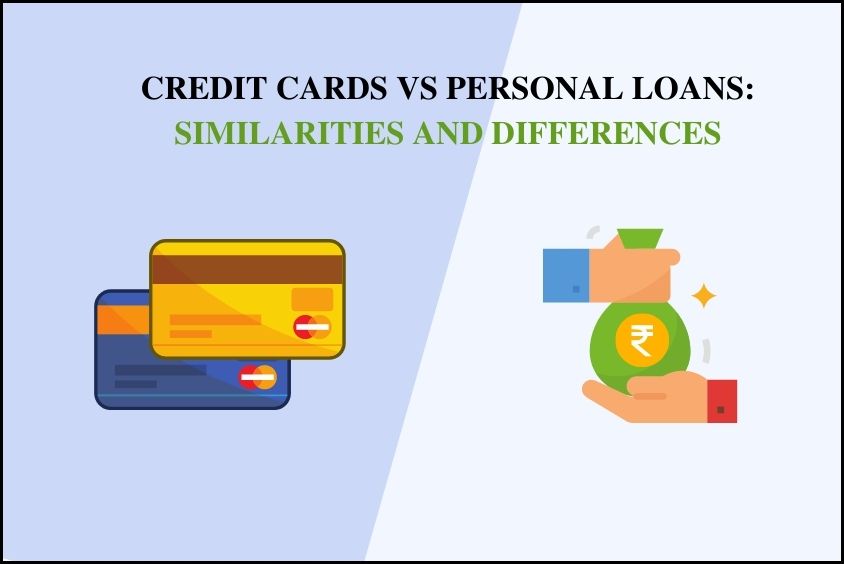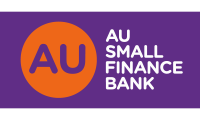As you are probably already aware, when you shop with your credit card, you are essentially borrowing a certain sum of amount from your card issuer, which is paid to the merchant by the issuer on your behalf at the time of transaction. A credit card, therefore, allows you a line of credit (more on line of credit later in the article), against which you can borrow a certain maximum amount from the bank every month (this maximum amount is known as the credit limit of the credit card) and repay the same later at the end of the monthly statement cycle, or at least within the allowed grace period (usually 20 days after the end statement cycle).

Line of Credit
Line of credit is a special type of loan with revolving credit, which means you can get a loan of flexible amounts every month up to a certain maximum amount. This loan, since granted on a monthly basis, is also supposed to be repaid every month- a statement is generated at the end of each month listing all your expenses.
In case of a line of credit granted on your credit card, if you clear the amount due on your statement balance within the grace period (up to 20 days after the statement date), you do not have to pay any interest on the amount borrowed that month i.e., you get an interest-free period of 50 days.
Personal Loan
A personal loan on the other hand is a regular installment loan, in which a certain lump sum amount is disbursed which you are supposed to repay in equal installments (monthly installments in most cases) within a fixed time period.
Similarity Between Credit Cards and Personal Loans
Credit cards and personal loans are similar in many respects, for example, both of them are unsecured loans (in most cases at least) and unlike home/education loans, you need not necessarily mention the purpose of a personal loan at the time of borrowing and as far as credit cards are concerned, you can use your Credit line to purchase anything with your card.
Another similarity between credit cards and personal loans is, neither can be used to borrow huge sums of amount. Usually, the maximum personal loan amount a bank would grant is only a few lakhs, and the same holds true for your credit card’s credit limit as well.
Differences Between Credit Cards and Personal Loans
We will now be comparing credit card loans and personal loans based on various parameters like ease of approval, interest rate, and many others, and see how they differ from each other-
Ease of Approval
As mentioned earlier, both credit cards and personal loans are unsecured loans- no collateral is required for issuance of a credit card or grant of a personal loan (there are certain credit cards, known as Secured credit cards or credit-builder credit cards, that are issued against a fixed deposit, which is considered as collateral). Therefore, the card issuer or lender must have a certain amount of confidence in you as a borrower that you will be able to repay the loan on time. Card issuers and lenders use multiple parameters to assess your creditworthiness, two of the most important ones being the credit score and gross monthly income.
Since credit cards are issued against a credit line that involves a revolving credit (you borrow a flexible amount every month from the issuer), the eligibility criteria for credit cards, in most cases, are stricter than that for personal loans. Most credit cards require a credit score of 750+ and a regular source of income, while many NBFCs would easily approve a personal loan even without any credit history.
In case you have a poor credit profile and your credit card application is rejected, again and again, you can always get a secured credit card against a fixed deposit, which will help you bring your credit profile in good standing.
Interest Rate
As mentioned earlier in the article, credit cards give you an interest-free period of up to 50 days (30 days of the monthly statement cycle and 20 days of grace period on payments made on the card on the 1st day of the statement cycle). If however, you default on credit card bill payment, credit card issuers charge you a very steep interest rate of around 3 to 3.5% per month (40 to 45% annually) on the unpaid due amount. What makes credit card interest even more daunting is, it is calculated for every purchase individually right from the date of transaction, which means you do not get any interest-free period in case of default on payment.
Also Read: How To Use Credit Card Interest-Free Period Wisely
Personal loan lenders usually charge comparatively lower interest rates which can be anywhere between 10-15% per annum. The interest rate, just like any other installment loan, is applicable from the date of disbursal of the amount which can be used anytime as per the wish of the borrower.
There are however certain credit cards available in the market that come with a lower interest rate, almost comparable with that applicable on personal loans. For example, HDFC Freedom Credit Card offers you a much lower interest rate of just 0.99% per month for the first 90 days of card issuance. IDFC FIRST Bank also offers an interest rate as low as 0.75% per month (or 9% per annum) on all their credit cards to select cardholders (IDFC FIRST has a variable interest rate policy– different interest rate for different customers based on their financial behavior). On similar lines, Federal Bank also offers an interest rate as low as 0.49% on their credit cards to select cardholders.
Application Procedure and Documentation
Nowadays almost all card issuers and lenders allow you to apply for credit cards/personal loans online on their official websites or mobile apps. So, you can apply for both, credit cards as well as personal loans online, however, the documentation requirement for credit cards is more stringent than that for personal loans. Also, card issuers usually take some time (up to 15 days) to make a decision (approve/disapprove) on your credit card application, while personal loans are approved and even disbursed (if loan documents are signed with digital signature) immediately (particularly in case of loans borrowed from NBFCs).
Loan Amount
Although you cannot borrow a really huge amount as a personal loan, still, if you have a regular flow of money in your bank account and a decent credit score (750+), what you will find is banks and NBFCs are willing to lend you more amount as a personal loan than the credit limit they are willing to grant on your credit card.
Loan Tenure
You get an interest-free period of up to 50 days on credit card spends as you do not have to pay any interest if you pay your credit card bill in full within 20 days (grace period) after the statement date. In case of non-payment of the bill in full, the remaining due amount is carried forward to the next statement cycle and interest (or finance charge) is levied on the same. The interest is calculated on an individual transaction basis for every transaction applicable right from the date of the transaction till the full payment of the due amount. This revolving credit can be carried forward to subsequent statement cycles as long as the card issuer allows, although the interest and the principal amount shall keep on accumulating. So there is no fixed tenure for the repayment of the loan availed against the line of credit on your credit card.
As far as personal loans are concerned, unlike line of credit, the principal amount is fixed and has to be repaid along with the applicable interest within a certain pre-defined time period in equal monthly installments.
Consolidation of Debts
If you owe multiple debts to different lenders, which may also include credit card debts, you can consolidate all your existing debts (repay the debts with another loan) by either availing a fresh personal loan or using one of your existing credit cards (balance transfer credit cards). If you choose the latter option, many card issuers allow you to transfer the balance (due amount) on one of your other bank’s credit cards to one of their credit cards. In most cases, you also get an interest-free period (or a low-interest period) of two to six months. Let’s say you get an interest-free period of three months after having transferred the balance on one of your credit cards to a balance transfer credit card, you get a buffer period of three months to clear your dues without incurring any further interest.
Another way of debt consolidation is to get a personal loan, repay your debts with the loan amount and then repay the present personal loan within the stipulated time period in equal monthly installments. The bank or any NBFC lender, in this case, will charge a certain interest rate on the principal amount. Therefore, if all your pending debts are credit card debts, it is better to avail of the balance transfer facility offered by various card issuers under which you can get an interest-free (or low-interest) period of two to six months to repay your credit card debts.
Emergency Cash Requirement
Sometimes you might find yourself in a situation when you are in urgent need of cash, but do not have enough liquid funds at your disposal. In such a situation, you can either use your credit card or you can also get a personal loan instantly credited to your bank account. If you use your credit card to withdraw cash, you will not only incur an additional cash withdrawal fee, no interest-free period is applicable on cash withdrawals with credit cards, which means you will end up paying the interest on cash withdrawal right from the date of transaction even if you pay the credit card bill in full on of before the payment due date.
Therefore, it is advisable to apply for a personal loan, which is almost always, not only approved but also disbursed instantly, instead of withdrawing cash using a credit card when in urgent need of cash.
Quick Comparision
The following table illustrates the similarities and differences between credit cards and personal loans-
| Credit Cards | Personal Loans | |
| Loan Type | Unsecured line of credit (certain secured credit cards are also offered against FDs). | Unsecured installments loan. |
| Loan Purpose | Credit Cards can be used at any online/offline merchant that accepts your network’s credit cards. | Any purpose (purposed need not be disclosed in application). |
| Ease of Approval | Generally stricter income-based eligibility criteria. | Easy approvals (sometimes even without any credit history). |
| Interest Rate | Around 3% to 4% per month (or 40% to 45% annually). | Around 10 % to 15% per annum. |
| Application Procedure and Documentation | Application processing takes a longer time and more documents are required. | Application process is less time-consuming, instant approval sometimes. |
| Loan Amount | Suitable for daily spends and other small and mid-sized purchases. | Suitable for mid-sized to big-ticket purchases. |
| Loan Tenure | No fixed tenure | Pre-decided loan tenure |
| Consolidation of Pending Debts | Balance transfer credit cards best suited for consolidation of credit card debts | Better choice for consolidation of pending debts other than pending credit card debts. |
| Emergency Usage | A high interest rate of 3% to 4% per month applicable even if the bill is paid in full on or before the payment due date. | A comparatively lower interest rate of 10% to 15% per annum is applicable. |
Conclusion
Both credit cards and personal loans are extremely useful financial products that have their own utility in specific usage scenarios. For example, a credit card can come in handy when it comes to daily purchases and small to medium-size transactions, or sometimes even for making big-ticket purchases on EMIs. On the other hand, a personal loan is a better choice when you are in urgent need of cash or planning a big-ticket purchase or some other big expenditure.








